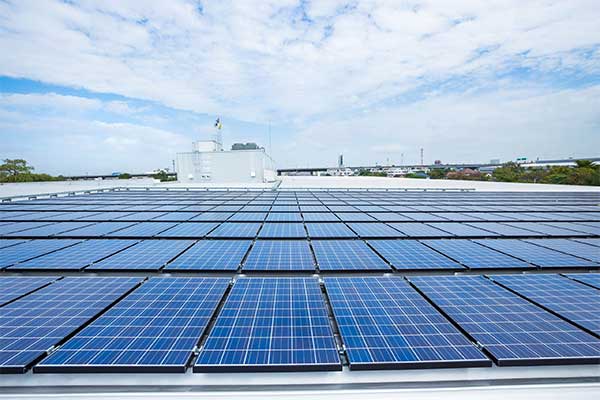Using a mixture of rooftop solar panels to generate electricity for the purpose of heating factories could help the industrial sector to slash its greenhouse gas emissions, a study finds.
The industrial sector consumes approximately 32% of the world’s final energy demand, mostly in the form of heat which is derived primarily from fossil fuels.
Two researchers uncover which solar technology, or mix of technologies—optimizes commercial rooftop use. In displacing fossil fuels, solar technologies may represent a big opportunity, but they also face several challenges.
According to the study published in “Environmental Research Letters,” one of the overlooked ‘challenge’ is the abundance of choice in selecting which type of solar collectors to install—a choice which may have ramifications on the global carbon emissions picture.
Solar energy can be harvested not only for generating electricity (via photovoltaic collectors and concentrated solar thermal power plants) but also for providing building heating and cooling, and for thermal energy in the domestic and industrial sectors.
Two fundamentally different technologies exist for harvesting sunlight to offset fossil fuel use—solar thermal (ST) and photovoltaic (PV) collectors.
The former converts sunlight into heat while the later converts sunlight directly into electricity (although electricity can be converted into heat via heat pumps and/or resistance heating).
If/when factories transition towards utilizing their rooftops for solar harvesting, an essential question will be: which solar technology, or a mix of technologies, should be chosen for factory rooftops?
The researchers answered the question by assessing the global greenhouse gas emission (GHGe) mitigation potential of PV and ST collectors in a side-by-side mix (e.g. a percentage where 0% is solely PV and 100% is solely ST available roof area coverage) to supply medium-temperature heat (150 °C–400 °C) for industrial processes.
It was found that in most locations globally, a mix of both technologies optimizes the solar output.
Globally, installing the optimum PV:ST mix can save up to 141.8 or 205.8 kt CO2e over installing solely PV or solely ST collectors, respectively.
Another interesting finding of this study was that GHGe mitigation potential stems largely from where the solar collectors were manufactured (i.e. the embodied emissions from using local primary energy to fabricate the collectors).
Thus, this study reveals that project managers, policymakers, corporate sustainability directors, etc could achieve maximum global GHGe mitigation by simply considering a mix of solar collector technologies and the best practices for manufacturing them.











Comments